Even the most dangerous animals are rarely as threatening to the survivor as the rest of the environment. This is true whether on land (see the most dangerous animals to threaten your survival on land) or in the water.
Here are the most dangerous animal threats to your survival on or under the water.
Most Dangerous Animals in the Water
Dangerous Animals in Rivers
Common sense will tell you to avoid confrontations with hippopotami, alligators, crocodiles, and other large river creatures. There are, however, a few smaller river creatures with which you should be cautious.
Electric Eels
Electric eels (Electrophorus electricus) may reach 2 meters in length and 20 centimeters in diameter. We don’t need to tell you to avoid them at all costs. They are capable of generating up to 500 volts of electricity in certain organs in their body — a mechanism they use to shock to stun prey and enemies.
Normally, you find these eels in the Orinoco and Amazon River systems in South America. They seem to prefer shallow waters that are more highly oxygenated and provide more food. They are bulkier than our native eels. Their upper body is dark gray or black, with a lighter-colored underbelly.
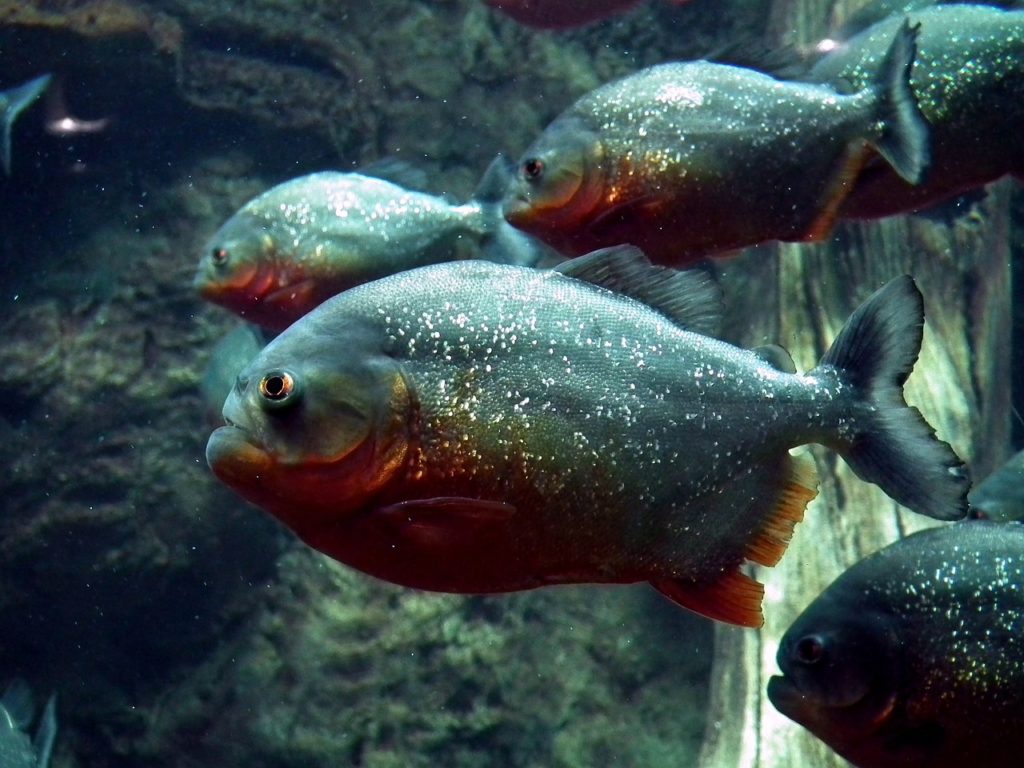
Dangerous Animals: Piranha
Piranha
Piranhas (Serrasalmo species) are another dangerous animal hazard of the Orinoco and Amazon River systems, as well as the Paraguay River Basin, where they are native. These fish vary greatly in size and coloration, but usually have a combination of orange undersides and dark tops.
They can reach up to 50 centimeters in length, and have white, razor-sharp teeth that are clearly visible. Use great care when crossing rivers and waters where they live and remember that they’re attracted to blood. They are most dangerous in shallow waters during the dry season.
Turtle
Be careful when handling and capturing large freshwater turtles, such as the snapping turtles and soft-shelled turtles of North America and the matamata and other turtles of South America. All of these turtles will bite in self-defense and can readily amputate fingers and toes.
Platypus
The platypus or duckbill (Ornithorhyncus anatinus) is the only member of its family and is easily recognized. It has a long body covered with grayish, short hair, a tail like a beaver, and a bill like a duck.
Growing up to 60 centimeters in length, it may appear to be a good food source, but this egg-laying mammal — the only one in the world — is a very dangerous animal. The male has a poisonous spur on each hind foot that can inflict intensely painful wounds. You find the platypus only in Australia, mainly along mud banks on waterways.
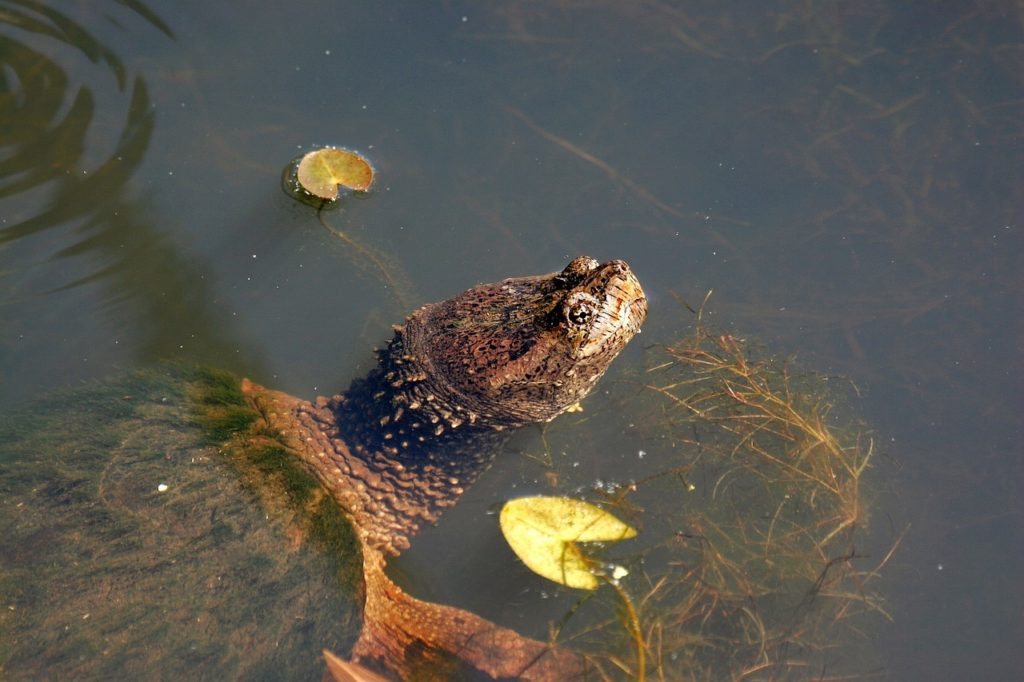
Snapping Turtle
Dangerous Animals in Estuaries and Bays
In areas where seas and rivers come together, there are dangers associated with both fresh and salt water. In shallow salt waters, there are many creatures that can inflict pain and cause infection to develop. Stepping on sea urchins, for example, can produce both infection and serious pain. When moving through shallow water, wear protective footgear and shuffle your feet along the bottom, rather than picking up your feet and stepping.
Stingrays (Dasyatidae species) are a real hazard in shallow waters, especially tropical waters. The type of bottom appears to be irrelevant. There is a great variance between species, but all have a sharp spike in their tail that may be venomous and can cause extremely painful wounds if stepped on. All rays have a typical shape that resembles a kite. You find them along the coasts of the Americas, Africa, and Australasia.
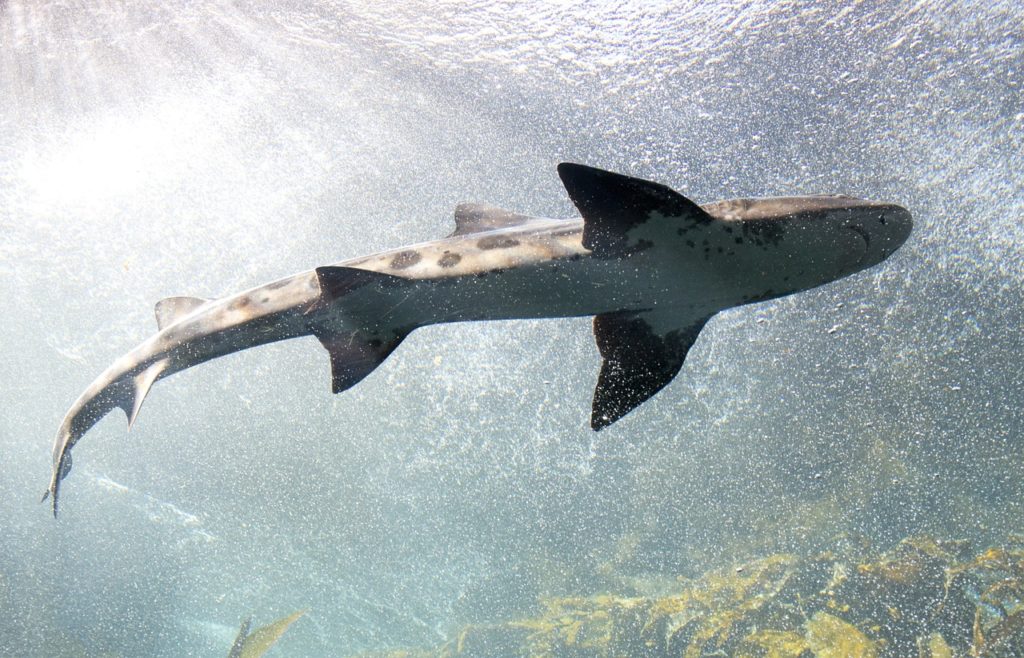
Shark
Dangerous Animals in Saltwater
There are several fish that you should not handle, touch, or contact. There are others that you should not eat.
Fish Dangerous to Handle, Touch, or Contact
There are several fish you should not handle, touch, or contact that are identified below.
Rabbitfish
Rabbitfish or spinefoot (Siganidae species) occur mainly on coral reefs in the Indian and Pacific oceans. They have very sharp, possibly venomous spines in their fins. Handle them with care, if at all. This fish, like many others of the dangerous animals in this section, is considered edible by native peoples where the fish are found, but deaths routinely occur from careless handling. Seek other non-poisonous fish to eat if at all possible.
Shark
Sharks are the most feared animal in the sea. Usually, shark attacks cannot be avoided and are considered accidents. You, as a survivor, should take every precaution to avoid any contact with sharks.
There are many shark species, but in general, dangerous sharks have wide mouths and visible teeth, while relatively harmless ones have small mouths on the underside of their heads. However, any shark can inflict painful and often fatal injuries, either through bites or through abrasions from their rough skin.
Tang
Tang or surgeonfish (Acanthuridae species) average 20 to 25 centimeters in length and often are beautifully colored. They are called surgeonfish because of the scalpel-like spines located in the tail. The wounds inflicted by these spines can bring about death through infection, envenomation, and loss of blood, which may incidentally attract sharks.
Toadfish
Toadfish (Batrachoididae species) occur in tropical waters off the Gulf Coast of the United States and along both coasts of Central and South America. These dully colored fish average 18 to 25 centimeters in length. They typically burrow in the sand to await fish and other prey. They have sharp, very toxic spines along their backs.
Scorpionfish
Poisonous scorpion fish or zebra fish (Scorpaenidae species) are found around reefs in the tropical Indian and Pacific oceans and occasionally in the Mediterranean and Aegean seas. They average 30 to 75 centimeters in length. Their coloration is highly variable, from reddish brown to almost purple or brownish yellow. They have long, wavy fins and spines and their sting is intensively painful. Less poisonous relatives live in the Atlantic Ocean.
Stonefish
Stonefish (Synanceja species) are in the Pacific and Indian oceans. They can inject a painful venom from their dorsal spines when stepped on or handled carelessly. They range in size up to 40 centimeters but are almost impossible to see because of their lumpy shape and drab colors.
Weever Fish
Weever fish (Trachinidae species) average 30 centimeters long. They are hard to see as they lie buried in the sand off the coasts of Europe, Africa, and the Mediterranean. Their color is usually a dull brown. They have venomous spines on the back and gills.
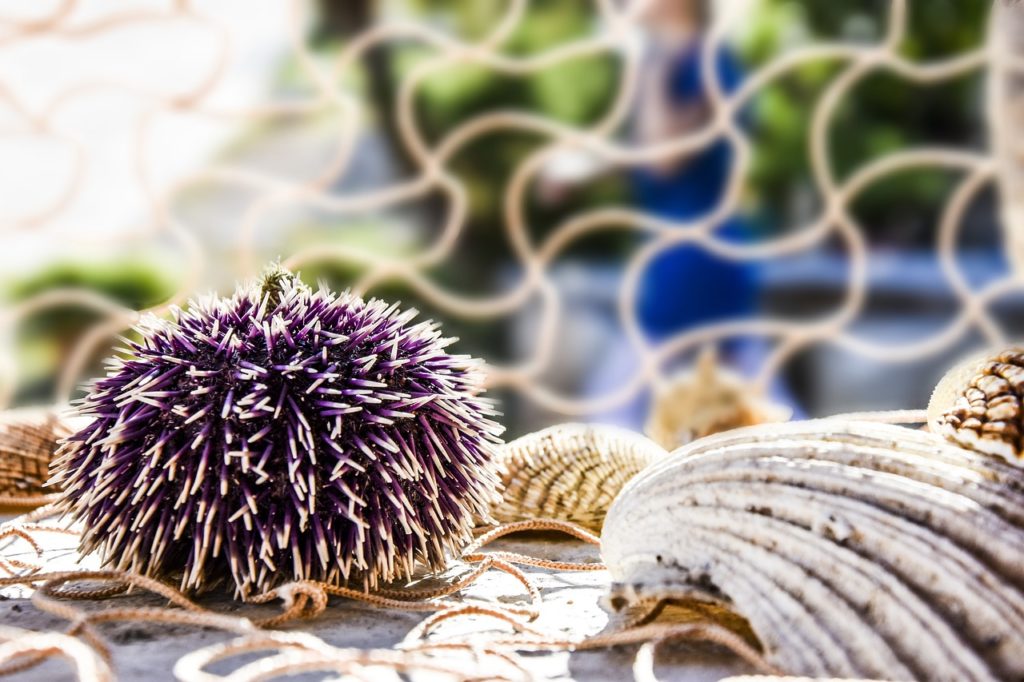
Sea Urchin
Dangerous Animals and Fish Poisonous to Eat
Survival manuals often mention that the livers of polar bears are toxic due to their high concentrations of vitamin A. For this reason, we mention the chance of death after eating this organ.
Another toxic meat is the flesh of the hawksbill turtle. You recognize them by their down-turned bill and yellow polka dots on their neck and front flippers. They weigh more than 275 kilograms and are unlikely to be captured.
Many other fish living in reefs near shore, or in lagoons and estuaries, are poisonous to eat, though some are only seasonally dangerous. The majority are tropical fish; however, be wary of eating any unidentifiable fish in a survival situation. Some predatory fish, such as barracuda and snapper, may become toxic if the fish they feed on in shallow waters are poisonous.
The most poisonous types appear to have parrotlike beaks and hard shell-like skins with spines and often can inflate their bodies like balloons. However, at certain times of the year, indigenous populations consider the puffer a delicacy.
Blowfish
Blowfish or puffer (Tetraodontidae species) are more tolerant of cold water. You find them along tropical and temperate coasts worldwide, even in some of the rivers of Southeast Asia and Africa. Stout-bodied and round, many of these fish have short spines and can inflate themselves into a ball when alarmed or agitated. Their blood, liver, and gonads are so toxic that as little as 28 milligrams (1 ounce) can be fatal. These fish vary in color and size, growing up to 75 centimeters in length.
Triggerfish
The triggerfish (Balistidae species) occur in great variety, mostly in tropical seas. They are deep-bodied and compressed, resembling a seagoing pancake up to 60 centimeters in length, with large and sharp dorsal spines. Avoid them all, as many have poisonous flesh.
Barracuda
Although most people avoid them because of their ferocity, they occasionally eat barracuda (Sphyraena barracuda). These predators of mostly tropical seas can reach almost 1.5 meters in length and have attacked humans without provocation. They occasionally carry the poison ciguatera in their flesh, making them deadly if consumed.
Other Dangerous Sea Creatures
The blue-ringed octopus, jellyfish, and the cone and auger shells are other dangerous sea creatures.
Blue-ringed Octopus
Most octopi are excellent when properly prepared. However, the blue-ringed octopus (Hapalochlaena lunulata) can inflict a deadly bite from its parrot-like beak. Fortunately, it is restricted to the Great Barrier Reef of Australia and is very small. It is easily recognized by its grayish white overall color and iridescent blue rings. Authorities warn that all tropical octopus species should be treated with caution, since many have poisonous bites, although the flesh is edible.
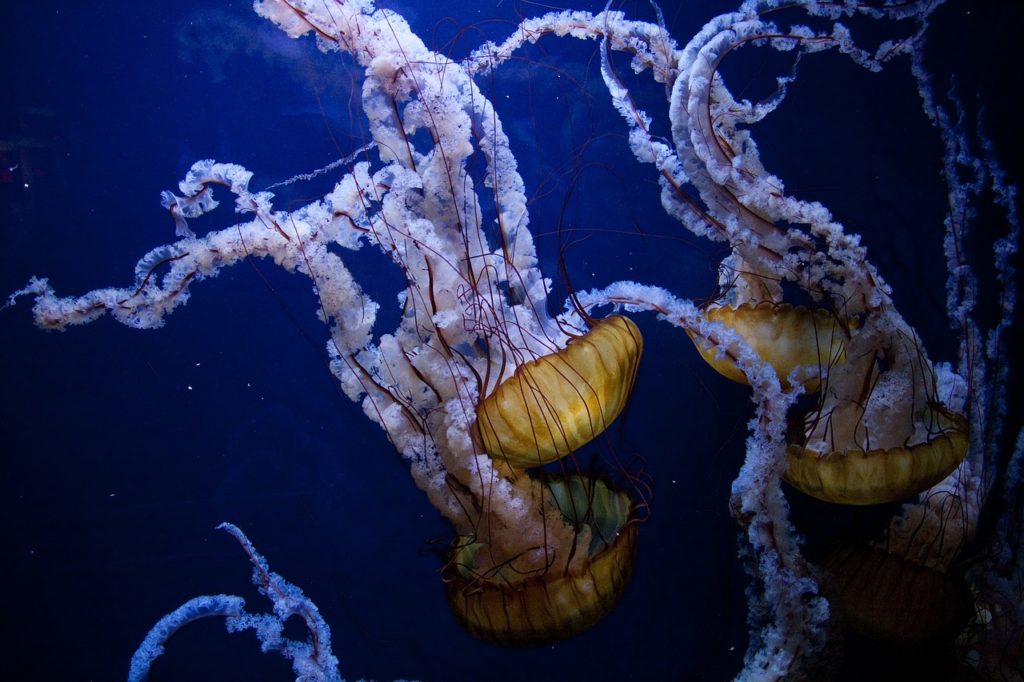
Jellyfish
Jellyfish
On the continuum of dangerous animals, jellyfish-related deaths are rare, but the sting they can inflict is extremely painful. The Portuguese man-of-war resembles a large pink or purple balloon floating on the sea. It has poisonous tentacles hanging up to 12 meters below its body. The huge tentacles are actually colonies of stinging cells. Most known deaths from jellyfish are attributed to the man-of-war.
Other jellyfish can inflict very painful stings as well. Avoid the long tentacles of any jellyfish, even those washed up on the beach and apparently dead.
Cone Shell
The subtropical and tropical cone shells (Conidae species) have a venomous harpoon-like barb. All are cone-shaped and have a fine net-like pattern on the shell. A membrane may possibly obscure this coloration. There are some very poisonous cone shells, even some lethal ones in the Indian and Pacific oceans. Bottom line: avoid any shell shaped like an ice cream cone.
Auger Shell
The auger shell or terebra (Terebridae species) are much longer and thinner than the cone shells, but can be nearly as deadly as the cone shells. They are found in temperate and tropical seas. Those in the Indian and Pacific oceans have a more toxic venom in their stinging barb. Do not eat these snails, as their flesh may be poisonous.